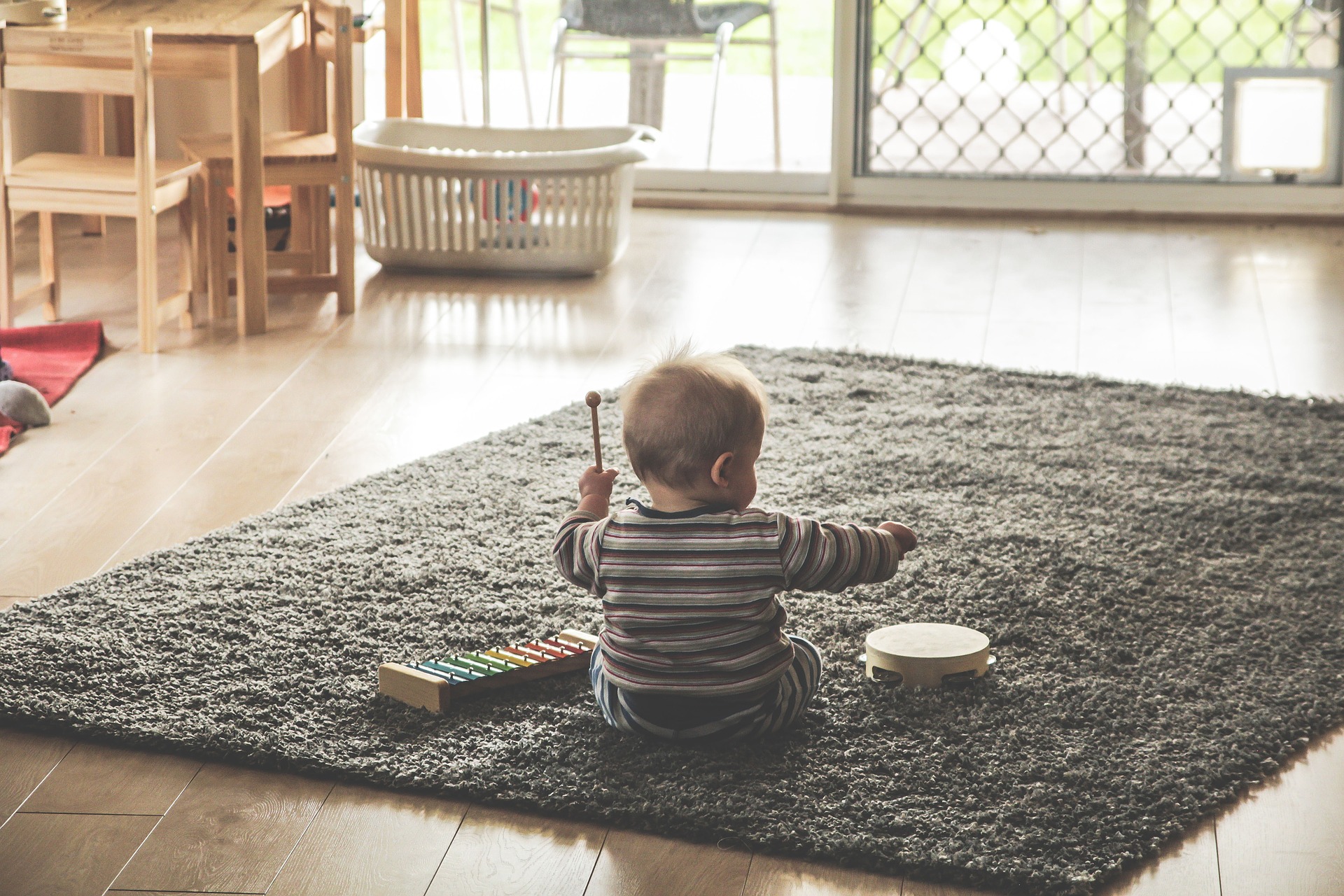TOY DEFECT LAWSUITS
Defective Toy Design: Toy Defects & Unsafe Products
Toys are meant to bring joy, creativity, and safe playtime for children. Unfortunately, defective toys can lead to severe injuries, emotional trauma, and long-term medical problems. Each year, thousands of children are treated in emergency rooms due to unsafe or faulty toys. Common hazards include choking risks, toxic materials, sharp edges, and poorly designed electronics that can overheat or cause burns.
When a manufacturer, distributor, or retailer places a dangerous toy on the market, families may be entitled to pursue a product liability lawsuit. These claims hold negligent companies accountable and provide compensation to help families manage medical bills, lost wages, and future care costs.
investigating defective toys, unsafe child product design & toy defect injury cases
Each year in the United States, hundreds of defective children’s products injure babies and children, and child product recalls are initiated. For many consumers, the recalls come too late, and only after serious accidents and injuries have occurred. Toy defects are a leading cause of household child injuries.
The Consumer Protection Safety Commission (CPSC) is tasked with regulating new products on the market, many of which are designed for children and babies. The safety agency works closely with manufacturers and issues safety recalls when injuries and accidents are reported.
The CPSC, however, can only act after the fact in many cases, and although they have been criticized for not preventing numerous accidents related to defective children’s products, the onus is on the manufacturer of child products to produce and market safe products for American consumers.
Many toys and defective products on the market present choking hazards for young children. Cheap and defective products may break into small pieces, and window cords, playground equipment, jewelry, or clothing create strangulation and choking risks.
The manufacturers of children’s products have a duty to foresee potential injury and properly design and test products before they are released to the public. Companies must also properly warn consumers of any risks associated with their products. Any failure to protect consumers that results in accidents and injury can lead to lawsuits filed by plaintiffs and their child injury lawyer.
Compensation following child injury accidents is likely for plaintiffs. Companies are likely to settle, and try to avoid bad press and a public trial. Financial compensation may not completely help in the healing process following an accident, but holding negligent companies responsible can force them to provide safer products in the future to prevent further accidents.
A product may be defective if any of the following statements are true:
- The product has a dangerous design
- The product is toxic
- The product does not function as intended or advertised
- The product is missing safety components
- The product has been made with cheap, inferior materials
- The product is poorly constructed or assembled
- The product has hidden or unreadable warning labels and instructions
Documented Toy Defects
According to the U.S. Consumer Product Safety Commission (CPSC), in just one year, there were an estimated 240,000 toy-related injuries treated in U.S. hospital emergency departments.
The CPSC is the primary federal safety agency responsible for making regulations for the sale and manufacture of consumer products, which includes numerous children-related products and toys. The agency is tasked with protecting children from injuries caused by defective products that pose a health or safety risk.
Each year, the CPSC releases an annual safety and recall report that describes specific toy-related injuries in the United States. Injuries involve minor cuts, bruises, or scratches, and also serious injuries and deaths that result from very dangerous products released on the market. The majority of injuries to children are typically twelve years-old or younger.
The toys associated with the largest number of injuries, according to the CPSC, are non-motorized scooters. Scooters and riding toys represented the largest number of incidents during the last year. Other toys that frequently injure children include balls, dolls, toy guns, water slides and inflatable toys.
Joe Lyon is a highly-rated Product Liability Lawyer representing plaintiffs nationwide in a wide variety of consumer product liability and toy defect cases.
Defective Toys & Child Product Safety Risks
- Choking hazards
- Drowning
- Strangulation
- Toxin ingestion
- Fall injuries
- Lacerations
Choking & Strangulation Hazards
Choking and strangulation hazards are some of the leading causes of child injury and death related to defective children’s products. Objects like balloons, small balls, magnets, marbles, detachable toy parts and art supplies present a serious danger.
Because many children place objects in their mouth, the CPSC has passed the Child Safety Protection Act which bans products with small parts for children under the age of three. Child product and toy companies are meant to test their products against the safety standard to determine any strangulation or choking hazard. Warnings are required if there is any doubt of safety.
Children are at risk of strangulation by cords, strings or ropes. Window blind cords, for example, are a severe child hazard. Breathing difficulties and asphyxiation can result in a short amount of time. Playground equipment and other furniture can present other chocking and strangulation risks.
Child Injury Lawsuits & Wrongful Deaths
- Flammable clothing
- Car seats
- Toxic toys
- Riding toys (scooters)
- Helmets
- Tricycles
- Bicycles
- Inflatable toys
- Water slides
- Space Heaters
- Window Blinds
- Swimming Pool Injury
Toxic Toys & Lead Poisoning
Lead toxicity can result from a child placing a contaminated product in their mouth. Very young kids and infants are usually the most vulnerable to oral poisoning accidents. Children can be exposed to a large dose of lead, or through long-term exposure. Lead can accumulate in the blood over a period of months to years.
Symptoms of lead toxicity may be mild, and can appear long after initial toxic exposure. Lead injuries all depend on the level and duration of exposure and ingestion. According to the U.S. Centers for Disease Control and Prevention (CDC), around 250,000 children in the U.S. under the age of five have elevated levels of lead in their system.
Toxic ingestion is a rather common issue for young kids, and even parents are unaware sometimes that child products could contain dangerous chemicals. Lead poisoning is still a problem, even though it is thought to be an age-old safety hazard. Many toys are recalled in the U.S., generally when toys manufactured outside the country are not tested before they are sold to the public.
Other hazardous chemicals may be in child products, and can cause adverse health effects. Some toxins are added to plastics in toys and other infant products. Plastic products that have contained chemicals include teething rings and pacifiers, rattlers and other toys. Children will often place any object in their mouth, whether intended or not, and it is crucial that children’s products are free of toxins.

Dangerous Children’s Products
In the past, some of the most notable and worst toy defects that presented safety hazards included the following:
- Easy Bake Oven—in 2007, there were 29 reports of children injuring their hands, which got caught in the product and suffered burns. Hasbro recalled almost one million ovens.
- Inflatable Baby Floats—products were recalled after it was reported that the leg straps of the float’s seat were susceptible to tearing, posing a serious drowning risk. About four million units were recalled.
- Yoyo Balls—presented strangulation risks and there were 17 reports of kids of suffering injuries with the cord wrapped around their neck.
- Hang 10 Mini Hammock—the mini hammocks risked kids getting tangled up or strangled in the hammocks. Thousands of products were recalled.
- Sky Dancers Flying Dolls—this toy was known to cause face and head injuries, as reported by around 150 customers.
- CSI Fingerprint Examination Kit—the dusting powder in the kit was found to have elements of asbestos, a mineral known to cause cancer.
- Barbie Dolls—in 2009, Mattel recalled China-manufactured Barbie dolls due to lead paint content.
- In 2007, Mattel recalled 21 million toys in a span of five weeks, many because of excessive levels of lead paint.
Child Accident Prevention
It is always a priority to keep kids safe by all means. It is prudent to follow CPSC child product recall lists, and make sure you do not already own defective children’s products. It is important to try to remember the following in order to minimize the risk of child injuries:
- Buy only flame-resistant child fabrics
- Monitor toy recalls
- Look out for toys with small, detachable parts
- Look for sharp edges
- Read child product manuals and instructions carefully
- Buy all non-toxic paints and art supplies
- Follow age restrictions and warnings
- Never leave children unattended
- Report any unsafe child products to the CPSC
Defective Toy Recalls
- Kids II recalled 680,000 Oball Rattles in March 2017 due to a choking hazard. The plastic discs on the outside of the rattle can break and release small plastic beads. At least 42 incidents were reported.
- Britax recalled 676,000 strollers because a defective receiver caused the car seat to fall unexpectedly in at least 33 incidents that resulted in at least 26 injuries.
- Little Tikes recalled 540,000 2-in-1 Snug ‘n Secure Pink toddler swings after 140 incidents caused 39 injuries. The swings can crack and break while in use, causing a child to experience a fall.
- Moose Toys recalled 427,000 Little Live Pets in February 2017 due to chemical and injury hazards. When the button batteries are removed, the battery’s toxic chemicals can leak. Seventeen incidents have been reported.
- Razor recalled 158,000 RipStiks Motorized Caster Boards after 700 incidents were reported. The caster boards, also known as vigorboards, were faulty and the rear wheel can lock while in use, posing a fall hazard.
- Dynacraft recalled 20,000 Surge and Tonka battery operated ride-on toys because the acceleration pedal can get stuck, causing accidents and falls.
- R. Smith recalled 800 Helix Pool Slides after at least 15 related injuries were reported. The sides of the slide are too low, and children can fall off before they reach the water. This can result in serious injury, particularly if they fall onto hard surfaces.
Can You File a Lawsuit?
If your child has been injured due to interaction with particular defective toys, it is critical to preserve the evidence with photographs and all product parts. Take photos at the scene and contact an injury lawyer as soon as possible.
An experienced product liability lawyer has the ability to hire experts in design and evaluate the cause of the injury. To build a strong case, there must be evidence that the design or material of a toy is defective, a manufacturing defect existed, or the manufacturer was negligent in marketing or testing methods.
Compensation may be available for past and future medical costs, pain and suffering, lost wages, as well as punitive damages against a toy manufacturer for disregarding the safety of children and consumers. Manufacturers and distributors of goods can be held liable for any physical harm or property damage caused by their products.
CONTACT THE LYON FIRM TODAY
Please complete the form below for a FREE consultation.
ABOUT THE LYON FIRM
Joseph Lyon has 17 years of experience representing individuals in complex litigation matters. He has represented individuals in every state against many of the largest companies in the world.
The Firm focuses on single-event civil cases and class actions involving corporate neglect & fraud, toxic exposure, product defects & recalls, medical malpractice, and invasion of privacy.
NO COST UNLESS WE WIN
The Firm offers contingency fees, advancing all costs of the litigation, and accepting the full financial risk, allowing our clients full access to the legal system while reducing the financial stress while they focus on their healthcare and financial needs.

Why Hire The Lyon Firm?
The Lyon Firm has represented families in complex product liability and child injury cases. We know how devastating it is when a safe product turns into a danger. Our firm offers:
-
Experience with child injury litigation and nationwide product recalls.
-
Expert resources to investigate defects and prove liability.
-
Personalized advocacy that prioritizes the well-being of your child and family.
-
No upfront costs — we work on a contingency basis, so you pay nothing unless we win.
CONTACT THE LYON FIRM TODAY
Questions about Defective Toy Design Cases
Unsafe toy product liability lawsuits often contain causes of action for strict liability, negligence, and breach of warranty. Strict liability applies to different factors than negligence-based claims.
In negligence cases, the actions of the defendant are the focus. In strict liability claims, the focus is on the condition of a toy at the time it left the manufacturer. If a children’s product is determined to be defective, the company is liable for any foreseeable injuries that are in-part caused by the defective condition of the product.
- Toxic materials
- Choking risks
- Strangulation risk
- Burn hazards
- Ingestible parts
A children’s product is defective if it is unreasonably dangerous for its intended use. A legal cause of action can be based on several types of product defects. The following are Cincinnati product liability and strict liability claims available in Ohio and in most jurisdictions nationwide:
(1) Manufacturing/ Construction Defect:
These issues arise where the defective toy is released from the factory in a manner that deviates from the intended design or specifications.
As a result of the deviation, the product enters the market in an unreasonably dangerous condition and a baby or child is exposed to or purchases a product that is defective. Any personal injuries or economic loss that arise from the the defect are compensable under Ohio product liability law.
(2) Defective toy design:
Defective design product liability cases arise not because a mistake was made during the manufacturing process, but rather the original toy design is unreasonably dangerous. A “risk benefit analysis” is used to determine whether safer/less expensive alternative designs were available to the manufacturer.
Federal regulations set minimum standards for the design of many consumer products, and preemption defenses may preclude liability in some situations if the manufacturer follows and obtains federal approval for a product.
(3) Failure to warn or inadequate warning or instruction associated with the product:
All consumer products come with necessary and appropriate warnings and instructions for use. If the lack of a warning makes the product and use of the toy unsafe, the manufacturer is liable for the failure to place the warning.
(4) Misrepresentation:
The product fails to conform to a representation or warranty. Warranty claims are more common in commercial and economic loss cases than in personal injury cases. In many States, The Product Liability Act does not apply to cases with only economic loss, because the Commercial Code provides recourse for breach of warranty.
The warranty may be written or implied based upon the products intended purpose and merchantability.
Following a serious injury to your child, The Lyon Firm has the experience, resources and dedication to take on difficult and emotional child injury cases and help our clients obtain the justice for the wrong they have suffered.
Experience: Joe Lyon is an experienced Cincinnati Product Liability Lawyer. The Lyon Firm has 17 years of experience and success representing individuals and plaintiffs in all fifty states, and in a variety of complex civil litigation matters. Product Liability lawsuits can be complex and require industry experts to determine the root cause of an accident or injury. Mr. Lyon has worked with experts nationwide to assist individuals understand why an injury occurred and what can be done to improve their lives in the future. Some cases may go to a jury trial, though many others can be settled out of court.
Yes, if your child has been injured, contact an attorney and document all medical records and keep the defective product. To prove the defective toy caused an injury, all evidence should be kept intact.
The most dangerous toys generally have the same risk factors, that may include: burn risks, strangulation or choking risks, fall injury risks or laceration risks.
Parents are urged to carefully select safe toys based on peer and expert reviews, by checking recall lists, by choosing larger toys babies cannot ingest, toys made of strong and non-toxic materials and without cords or sharp edges.
Toys may be unsuitable for certain ages due to some inherent design defects. Other toys may be constructed with dangerous chemicals. Baby choking risks and strangulation hazards should be kept in mind when choosing an appropriate toy.
Legal Options For Families
Toy defect lawsuits are often brought as product liability claims, which may be based on:
- Design defects — when the toy’s overall design is unsafe.
- Manufacturing defects — when errors in production make the toy dangerous.
- Failure to warn — when companies fail to provide adequate safety instructions or warnings.
Families may pursue claims against multiple parties in the supply chain, including manufacturers, distributors, and retailers. Compensation can cover hospital bills, rehabilitation, pain and suffering, and future medical needs.
Child Safety Litigation
Product Liability Cases
-
-
Answer a few general questions.
-
A member of our legal team will review your case.
-
We will determine, together with you, what makes sense for the next step for you and your family to take.
-
